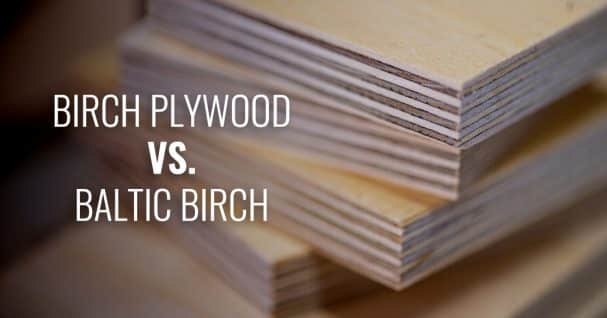
Although they share a name, Baltic Birch and standard birch plywood have several key differences that can impact the strength, stability, and overall visual appeal of your next project. Discover the main differences between standard birch and Baltic birch, and find out which one is best for your needs.
Thickness of Wood Veneers
Both types of plywood showcase birch veneers on the face and back of each sheet. The veneers on Baltic birch are thicker than most plywood veneers, giving it additional heft and strength. Since each layer is made of Baltic birch, you can sand this wood down to meet your needs. Standard birch plywood, on the other hand, has thin veneers (about 1 millimeter in thickness) that can’t withstand the sanding process. Instead, standard birch plywood is a good choice when you want to paint something or don’t want to change its finish.
PLywood Voids
Standard birch plywood is more prone to voids (holes in the ply layers). Voids can affect the structural integrity of any project, and large holes should be filled to give the wood more durability. Conversely, Baltic birch has very few voids. When voids do appear, most wood suppliers will use a “knockout” to replace the void with an intact piece of wood. With so few voids, Baltic birch offers more stability than its standard counterpart.
Wood Strength Comparision
When it comes to strength and stability, Baltic birch is hard to beat. The wood has about twice as many plys as standard birch plywood, and each layer is made up of birch, not MDF, particle board, or another type of core. With almost no voids, a harder core, and a consistent thickness throughout, this wood grips and holds screws tight. This gives Baltic birch stability and strength that standard birch plywood lacks, making it perfect for heavy-duty projects that need to hold weight.
Wood Appearance Differences
Baltic birch and standard birch create different styles when finished. Standard birch is great for painting, which can give your piece a unique look and color. Baltic birch has a consistent grain pattern that tends to become blotchy when stained. If you want to change the appearance of the wood, use a gel stain or dye. Luckily, Baltic birch has an appealing natural finish. Whether you’re displaying the consistent grain pattern of the face or back or using the exposed edges to highlight Baltic birch’s many layers, this adds a unique aesthetic to any project.
Need help deciding which type of birch to use for your next project? Contact the team at Forest Plywood! We offer several grades of standard plywood and baltic birch to meet your needs and price range.



